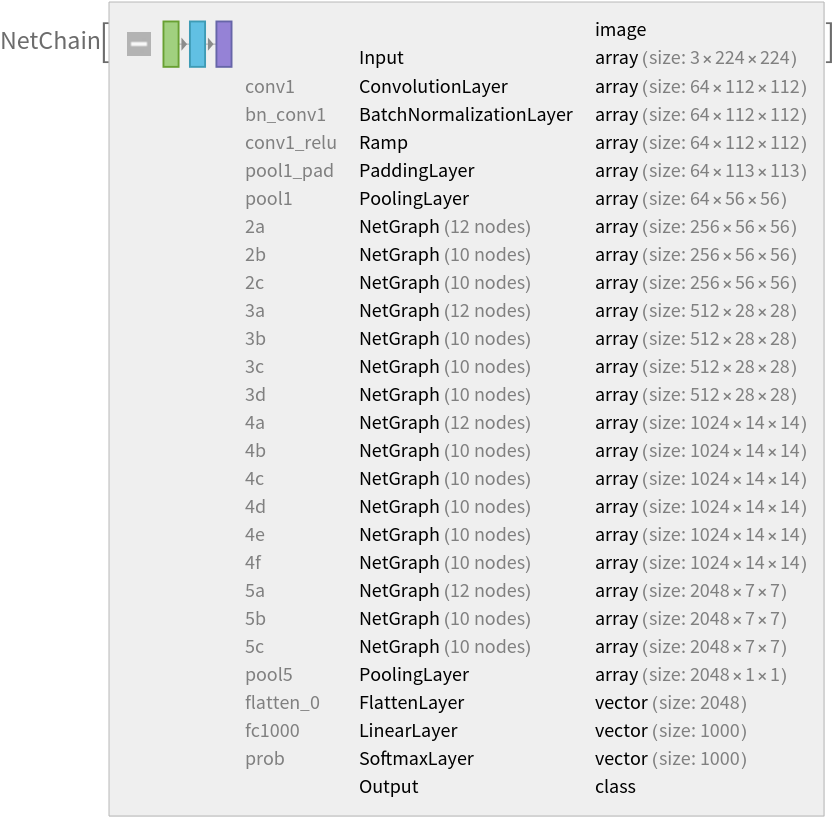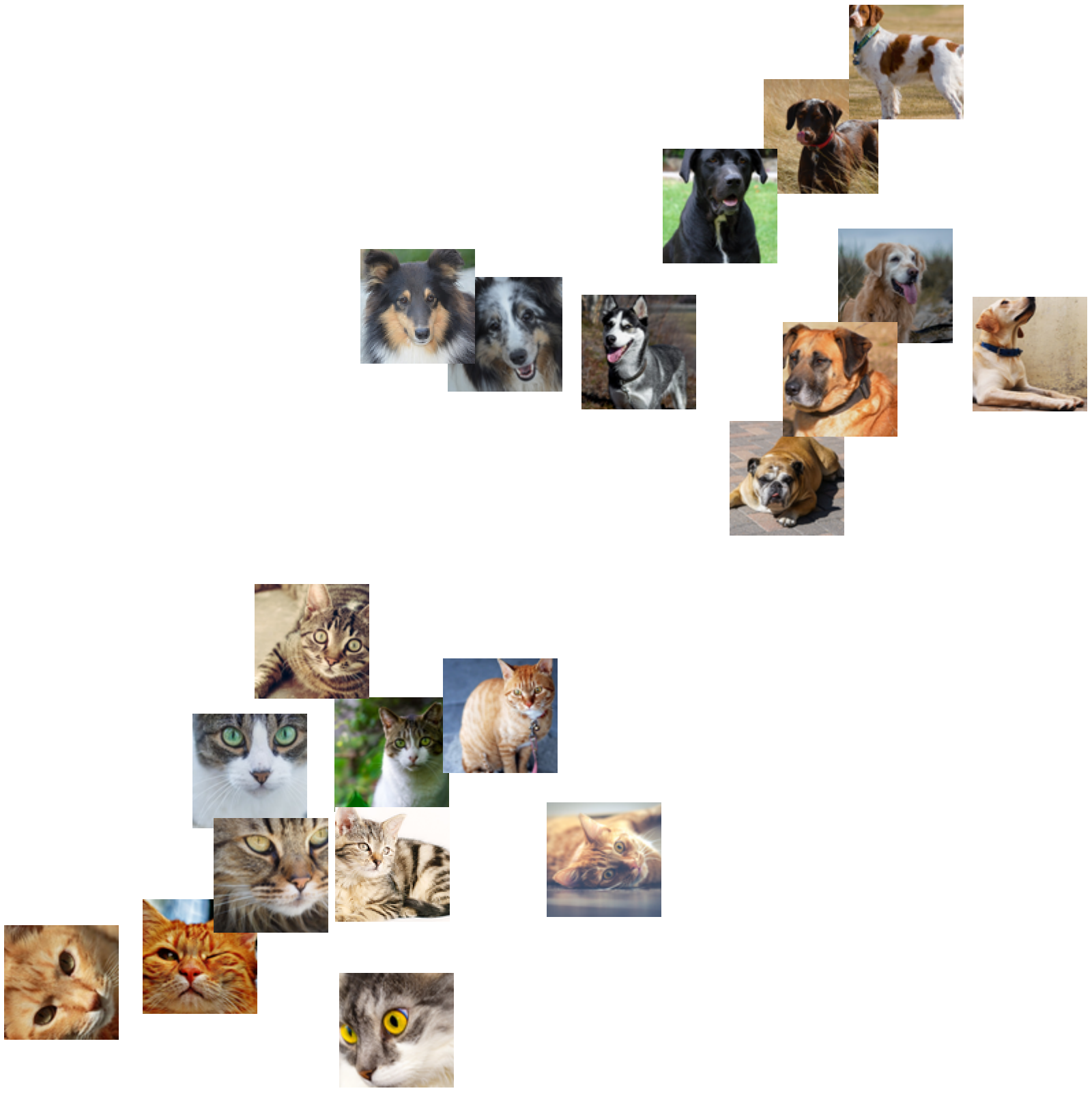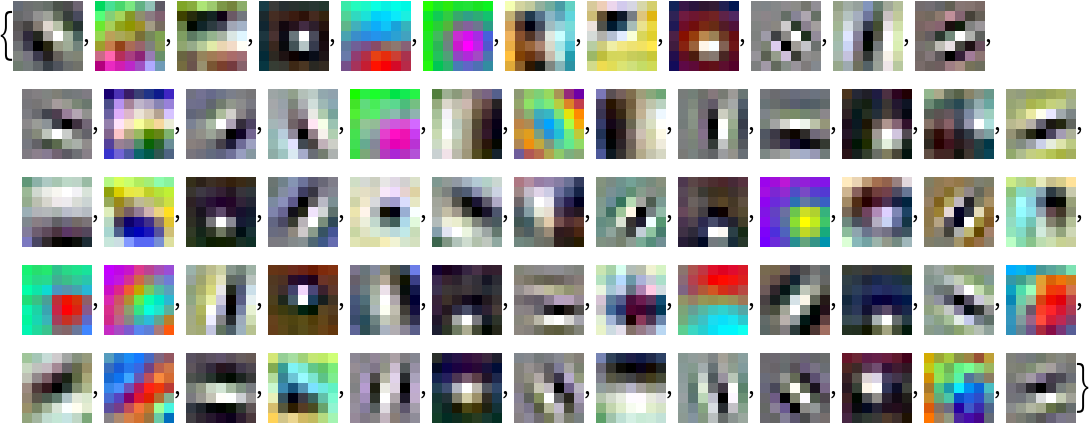Resource retrieval
Get the pre-trained net:
Basic usage
Classify an image:
The prediction is an Entity object, which can be queried:
Get a list of available properties of the predicted Entity:
Obtain the probabilities of the ten most likely entities predicted by the net:
An object outside the list of the ImageNet classes will be misidentified:
Obtain the list of names of all available classes:
Feature extraction
Remove the last three layers of the trained net so that the net produces a vector representation of an image:
Get a set of images:
Visualize the features of a set of images:
Visualize convolutional weights
Extract the weights of the first convolutional layer in the trained net:
Visualize the weights as a list of 64 images of size 7x7:
Transfer learning
Use the pre-trained model to build a classifier for telling apart images of dogs and cats. Create a test set and a training set:
Remove the linear layer from the pre-trained net:
Create a new net composed of the pre-trained net followed by a linear layer and a softmax layer:
Train on the dataset, freezing all the weights except for those in the "linearNew" layer (use TargetDevice -> "GPU" for training on a GPU):
Perfect accuracy is obtained on the test set:
Net information
Inspect the number of parameters of all arrays in the net:
Obtain the total number of parameters:
Obtain the layer type counts:
Display the summary graphic:
Export to MXNet
Export the net into a format that can be opened in MXNet:
Export also creates a net.params file containing parameters:
Get the size of the parameter file:
The size is similar to the byte count of the resource object:

![(* Evaluate this cell to get the example input *) CloudGet["https://www.wolframcloud.com/obj/bbd32a4c-0ce4-400f-b64d-a84609a3bf9b"]](https://www.wolframcloud.com/obj/resourcesystem/images/bfa/bfabd9e5-7de8-40bc-964a-44901908630a/34d4e283c76e76ba.png)

![(* Evaluate this cell to get the example input *) CloudGet["https://www.wolframcloud.com/obj/b57bcc67-83dc-4672-89e3-ef01641e3765"]](https://www.wolframcloud.com/obj/resourcesystem/images/bfa/bfabd9e5-7de8-40bc-964a-44901908630a/37c2c700ae0f4e9a.png)

![(* Evaluate this cell to get the example input *) CloudGet["https://www.wolframcloud.com/obj/101e84a7-9ae9-4ead-b1dc-0c86b655c7ea"]](https://www.wolframcloud.com/obj/resourcesystem/images/bfa/bfabd9e5-7de8-40bc-964a-44901908630a/6a31639a6c45157b.png)


![(* Evaluate this cell to get the example input *) CloudGet["https://www.wolframcloud.com/obj/2f105f7f-5f29-4ee7-8740-4f8427165888"]](https://www.wolframcloud.com/obj/resourcesystem/images/bfa/bfabd9e5-7de8-40bc-964a-44901908630a/79d66e3c9aa21c7a.png)


![(* Evaluate this cell to get the example input *) CloudGet["https://www.wolframcloud.com/obj/4d8cd205-1979-42c1-a4df-03b9d8dce860"]](https://www.wolframcloud.com/obj/resourcesystem/images/bfa/bfabd9e5-7de8-40bc-964a-44901908630a/731a6daceccfd131.png)
![(* Evaluate this cell to get the example input *) CloudGet["https://www.wolframcloud.com/obj/86b90c1d-6c8c-4a39-b453-f32a26fb713c"]](https://www.wolframcloud.com/obj/resourcesystem/images/bfa/bfabd9e5-7de8-40bc-964a-44901908630a/135daa1395f2ab37.png)

![newNet = NetChain[<|"pretrainedNet" -> tempNet, "linearNew" -> LinearLayer[], "softmax" -> SoftmaxLayer[]|>, "Output" -> NetDecoder[{"Class", {"cat", "dog"}}]]](https://www.wolframcloud.com/obj/resourcesystem/images/bfa/bfabd9e5-7de8-40bc-964a-44901908630a/605da63536972105.png)


